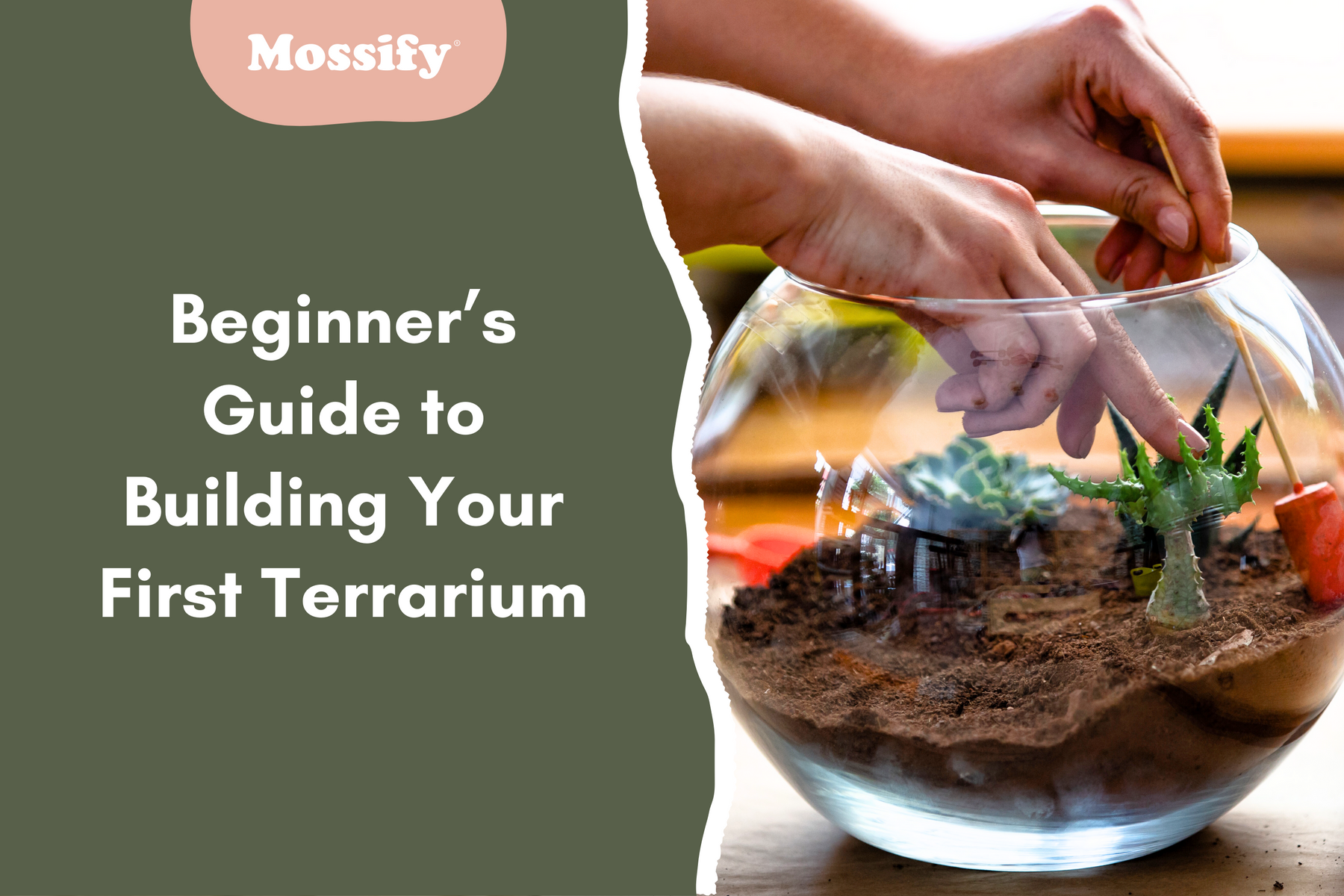With over 300,000 happy plants.
Over 300,000 happy plants

Creating a terrarium is like setting up a miniature world inside a glass container. It’s a rewarding activity that combines nature and creativity, allowing you to enjoy a small slice of the outdoors indoors. Follow this detailed, step-by-step guide to build your first terrarium, designed for beginners but rewarding enough for gardeners at any level.

Selecting the right container sets the tone for your terrarium. You can use any clear glass container, but make sure it’s clean and transparent to allow for maximum light penetration. Popular choices include fishbowls, mason jars, apothecary jars, and even specialized terrarium containers available in gardening stores.
Consider the size and opening of your container as well. A larger opening makes planting easier, especially if you plan to use tools or have larger elements inside. However, a smaller opening can create a more controlled humidity environment which is perfect for moisture-loving plants.

Your terrarium needs a proper foundation. Begin with a layer of pebbles or small stones to create a drainage layer. This is crucial as it prevents water from pooling at the bottom, which could cause root rot.
Over the stones, add a layer of activated charcoal. This is not just for decoration—it helps in filtering the air and water within the terrarium, keeping the environment fresh and free from bacterial and fungal growth.
Next, add a generous layer of sphagnum moss. This type of moss is excellent for moisture retention and will act as a barrier to prevent the soil from sifting down into the charcoal and stones.
Finally, add your potting soil. A light, porous soil mix is ideal. For moisture-loving plants, mix in some forest moss, which can enhance the soil's ability to retain water and provide a nutrient-rich base.

Choose plants that are small enough to fit inside your container and will not grow too large. You should consider the climate conditions each plant needs to thrive, such as moisture, light, and temperature.
For a humid terrarium, go for ferns, small orchids, and different types of moss such as Spanish moss. Spanish moss is particularly useful for adding aesthetic appeal and functionality, as it helps maintain humidity and can be draped over branches or rocks for a mystical, swampy look.
Planting should be done with care. Use a spoon or a small trowel to dig little holes, then place each plant inside, gently patting the soil around it to secure it. Start with the largest plant and move to the smallest, ensuring each has enough space to grow.

Now that your plants are in place, personalize your terrarium by adding natural elements that enhance its beauty and the health of its ecosystem. You can include larger stones, beautiful pieces of driftwood, or even whimsical figurines.
Additionally, a top layer of Spanish moss can be added for its aesthetic value and practical benefits. It not only looks good but also helps to keep the soil moist and maintain humidity within the terrarium.
Position your terrarium in a spot that receives indirect sunlight. Direct sunlight can cause the terrarium to heat up excessively, leading to plant damage. Water sparingly, as the enclosed environment helps to retain moisture. For an open terrarium, water when the soil looks dry, but be cautious not to overwater.
Monitor your terrarium for signs of over or under-watering, and adjust as necessary. Prune any overgrown or dead plants to keep the terrarium looking tidy and healthy.
Building a terrarium is an enjoyable way to bring a piece of nature into your home. It requires minimal maintenance but offers maximum beauty and a peaceful ambiance. Whether you’re a seasoned gardener or a beginner, creating a terrarium is a creative journey that rewards you with a living landscape to admire and enjoy.
Dejar un comentario